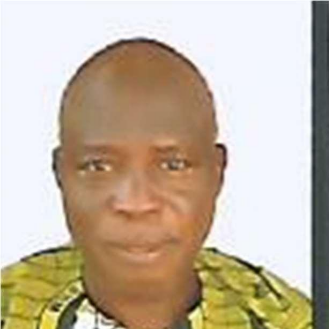International Journal of Mathematical Sciences and Computing (IJMSC)
IJMSC Vol. 6, No. 6, 8 Dec. 2020
Cover page and Table of Contents: PDF (size: 359KB)
Mathematical Model for Predicting the Rate of Human Happiness: A study of Federal University Wukari community of Nigeria
Full Text (PDF, 359KB), PP.30-41
Views: 0 Downloads: 0
Author(s)
Index Terms
Happiness, Model development, Age, Challenges, Optimization of the model, Correlation coefficient, Constant of integration
Abstract
The research is concerned with the development of a mathematical model for predicting the rate of human happiness and to outline factors that influence human happiness. The model was optimized and observation about the model’s extreme value was made. The outcome of the optimization result showed that happiness has neither minimum nor maximum level that should be required in human. It means someone’s happiness could be close to 0% or even be up to 100%. Thereafter, the model was analysed and the collated real-life data were correlated with those of the model data (H model) using suitable statistical tools. The findings from the correlation result showed that the questionnaire result attained a 70% degree of correlation with the estimated model result (H model), and thus recommending the model as a standard measure for predicting the rate of human happiness.
Cite This Paper
Ogwumu Onah.David, Kyagya T.Yusuf, Amakoromo Grace.I., Keto, Kingsley M., Ezeh A.Tochukwu., Ogofotha Marvellous O., Elugah Joseph.I.. " Mathematical Model for Predicting the Rate of Human Happiness: A study of Federal University Wukari community of Nigeria ", International Journal of Mathematical Sciences and Computing (IJMSC), Vol.6, No.6, pp.30-41, 2020. DOI: 10.5815/IJMSC.2020.06.05
Reference
[1] M. Buchibrand, 7 forms of divorce in Africa, Retrieved on 22nd May 2018 from https://www.nairaland.com/2526539/7-forms-divorce-africa, 2016.
[1] S. H. Strogatz, “Love affairs and differential equations”, Mathematics magazine; 1994, 61: 35.
[2] M. J. Radzicki, “Dyadic processes, tempestuous relationships, and system dynamics,” System Dynamics Review, 1993; 9: 79-94.
[3] F. Orsucci, “Happiness and deep ecology: On noise, harmony, and beauty in the mind”, Nonlinear Dynamics, Psychology, and Life Sciences ,2001; 5: 65-76.
[4] D. Goleman, “Destructive emotions: A scientific dialogue with the Dalai Lama”, New York: Bantum, 2003.
[5] E. Diener, E. Suh, R. Lucas & H. Smith, ”Subjective well-being: Three decades of progress”, Psychological Bulletin, 1999; 125: 276-302.
[6] P. Anand, Happiness Explained. Oxford University Press, retrieved online, 2016.
[7] D. Haybron, "Happiness", The Stanford Encyclopedia of Philosophy, 2011; 1: 1-45. retrieved:https://plato.stanford.edu/archives/fall2011/entries/happiness/>.
[8] B. Blalock, “LIVING YOUR LEGACY NOW: inspiring life lessons for a successful, healthy and fulfilling life”. DOG EAR Publishing, 2018.
[9] R. Raghunathan, “ The Pursuit of Happiness: Can It Make You Happy?”, PsycEXTRA Dataset, 2018.
[10] M. Gawdat, “Solve for Happy”, Pan Macmillan, 2019.
[11] J. Raibley, “Well-being and the priority of values,” Social Theory and Practice, 2010; 36(4): 593.
[12] J. D. Velleman, “Well-Being and Time,” Pacific Philosophical Quarterly, 1991; 72(1): 48-77.
[13] A. Clark and A. Oswald, “unhappiness and unemployment”. Economic journal, 1994; 104(424): 648-59.
[14] K. Eisold, “why are we happier as we age”. Happiness and age. Retrieved from: https://www.psychologytoday.com/intl/blog/hidden-motives/201006/happiness-and-age, 2010.
[15] R. G. Sargent, ‘’Verification and Validation Of Simulation Models’’, Proceedings of the Winter Simulation Conference, 2011.
[16] J. Hillston, “ PEPA nets: a structured performance modelling formalism”. Performance Evaluatio, .retrieved: http://www.inf.ed.ac.uk/teaching/courses/ms/notes/note14.pdf, 2003.






